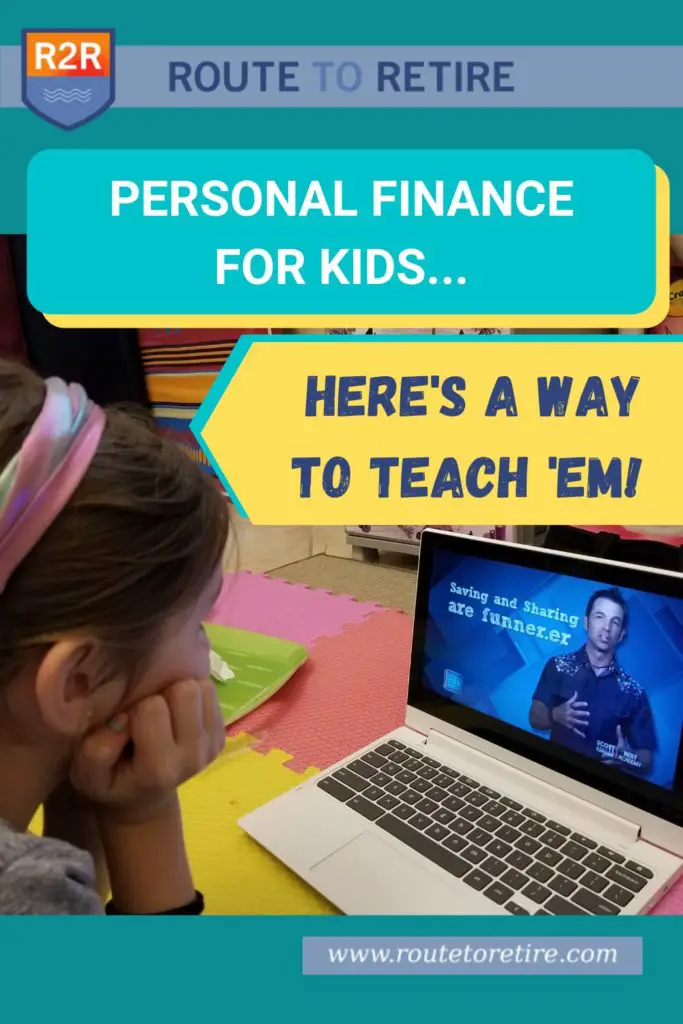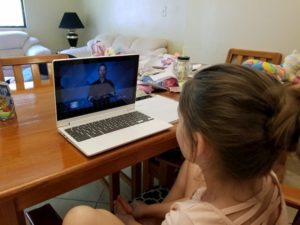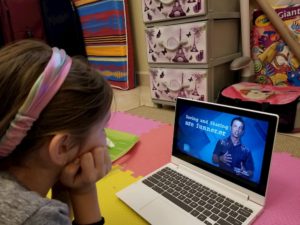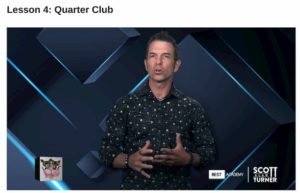Disclosure: This post contains affiliate links and we may receive a referral fee (at no extra cost to you) if you sign up or purchase products or services mentioned. As an Amazon Associate, I earn from qualifying purchases.

lt seems to be a relatively common discussion in the community here that we need some better education when it comes to personal finance for kids.
The problem is that most schools don’t build this into the curriculum. Kids end up graduating from school more academically prepared but not financially prepared.
That’s a huge problem. Personal finance for kids needs to be a pillar in our educational system. Not knowing even the basics such as the magic of compound interest can be dramatically detrimental to your savings in the future.
Generation after generation tend to repeat the same mistakes simply because you don’t know what you don’t know. It’s hard for many parents to teach this area of education to their children if they don’t fully understand it themselves. If you don’t realize the intricacies of investing in the stock market for example, how do you explain that to your children?
I don’t think I’m in a position to revolutionize the curriculum taught in schools. However, I’m hopeful that personal finance for kids will become a little more commonplace in the school system… eventually.
In the meantime though, I’m making sure that my daughter’s learning the important facets of money. Whether it’s the basics of spending, saving, loans, and debt or the more advanced topics like investing, taxes, and financial independence, I’m ensuring that Faith will have a leg up in building a solid financial future for herself.
Homeschooling our daughter, Faith, has been a plus in that we’ve just made personal finance a regular part of her schooling. And it’s even better that I have a good subset of knowledge in this area to be able to know where to focus with her.
But I’m no teacher. I do the best I can but, as hard as this might be to believe, kids tend to not want to learn from their parents. Ok, maybe that’s just around here, but I can picture Faith just rolling her eyes every time I say something like, “Today we’re going to talk about the 4% rule.” Actually, we haven’t gotten to the 4% rule yet, but we’ll find our way there soon!
Regardless of whether your kids are in a traditional school or being homeschooled, we all want our children to succeed. We want them to grow up to be better. And unfortunately, money runs this world. Being in a good position financially can be one of the most valuable assets in your child’s toolbelt.
Wouldn’t it be great if there was something that could help a little with some education in the area of personal finance for kids?
Enter Scott Alan Turner.
TA-DA!!!
BEST Money Academy
Scott Alan Turner is a Certified Financial Planner (CFP) and self-made millionaire. He’s also a guitarist in a rock band and someone who just has fun in life.
Scott’s written a few money books like 99 Minute Millionaire, How to Save $1,000 This Week, and my daughter’s favorite when she was younger, Money A to Z.
So when I heard that he created an online money academy, I perked up. Here’s a guy who understands the information that needs to be taught and can do it while keeping it interesting and fun.
The whole series is called BEST Money Academy and there are multiple courses based on age-group within it:
- Money A to Z (Pre-K to Grade 3)
- KIDZ Money (Grades 3-6)
- TEENZ Money (for Teenagers)
- Millionaire Roadmap (for Teens + Adults)

The cool thing is that your subscription gives you access to all the courses and you can bounce around between them as much as you want.
Scott does most of the teaching along with Maddie popping up frequently throughout the course as well. For the most part, he’s standing in his studio lecturing like a school teacher. Except he has fun with it, adds in a lot of humor, and even throws in some cat videos now and again.
Each video lesson in Money A to Z and KIDZ Money tends to be under 15 minutes, which is a perfect bite-sized episode for a kid. In TEENZ Money, the videos are longer – generally up to around 20 minutes. And in Millionaire Roadmap, they range from around 5 minutes to just under 30-minute lessons.
Additionally, there are PDF downloads of various materials to go along with the lessons – activities, guidebooks (for parents), and other resources.
As of this writing, here’s an idea of what to expect in each course…
Money A to Z
This course focuses on getting your child to understand the concept of money. Scott has lessons on earning money as well as saving and spending. And then there’s something called the Quarter Club, which I thought was a creative way to get your kid rolling on getting the concepts of responsibility and earning money.
There are currently a few intro videos plus an additional 5 lessons in this course.
He even throws in his children’s book (also called Money A to Z) as a PDF for free… bonus!
KIDZ Money
Now we’re starting to get a little more serious on some personal finance for kids! This course includes a couple of welcome videos (one for you and one for your child) along with 22 lessons.
The lessons range from topics such as saving, tracking your spending, sharing, and chores. I was happy to see that he didn’t focus on plugging for kids to think about going out and getting a job when they’re older. He doesn’t say anything bad about that subject, but instead, he also opens up kids to the ideas of entrepreneurship. Scott even discusses (on a kids level) the concepts of taxes, borrowing money (debt), and how credit works.
There are a kid’s workbook and teacher’s guide included as PDFs.
TEENZ Money
TEENZ Money is obviously catered toward teens and introduces some thoughts on why you should start saving. He hits on saving for emergencies and discusses some tricks and hacks on saving more.
He has lessons on subjects such as:
- Buying a car
- Planning for college
- Getting a job
- The dangers of debt
- Credit cards and credit scores
- Apartment hunting
- Identity theft
- Insurance
- Investing
These are just some of the topics – you’re really getting a ton of great stuff here! There are 16 courses within TEENZ Money and then each of those lessons has a bunch of sub-lessons under them. There are various materials such as workbooks in each course.
I like that Scott aims to help teens understand that money is important to be able to live life on their terms. Likewise, he helps them understand that it truly is possible to become a millionaire.
Scott hits on all those facets of money I wish I knew when I was younger.
Millionaire Roadmap
Building on TEEZ Money is Millionaire Roadmap.
This course is aimed at teens and adults. As he puts it on the site:
The Millionaire Roadmap will guide you step-by-step to financial freedom. Pay off debts, save more, earn more, and invest for the future.
This course has 13 lessons, many of which are the same ones included in TEENZ Money. The overlap makes a lot of sense as they can apply to both segments. Then there are few additional lessons in it such as:
- Debt Free!
- Make More Money! – Careers + Side Hustles (not available yet at the time of this writing)
- Home Sweet Home & Mortgages (not available yet at the time of this writing)
If you or someone in their later teen years or older wants to build an understanding of the various aspects of personal finance, this is the course for you.
Personal Finance for Kids – Putting Faith on it
When I first heard about this, I thought this would be a perfect opportunity for Faith. She’s almost 10 years old and I’ve been teaching her various aspects of personal finance for years now. We’ve even incorporated it into her homeschooling schedule.
One of the obstacles though is that it’s pretty casual. I think of a topic a few days before and roll with it. She’s still learning a lot but it’s not very organized.
So the BEST Money Academy struck me as a good opportunity to touch on a huge variety of money topics. I decided to put Faith on the job of being the real evaluator for the course. I filled her in on the idea and she was game.
She then spent a lot of time over a couple of weeks watching every single lesson in the KIDZ Money course…


As she was going through it, I kept asking for feedback. Here are a few of the things she told me over the weeks…
I like it because it’s fun… and they’re not too long.
I already know some of it because of what you teach me.
I like them because they’re short, fun, and have different topics.
Great – anything you don’t like, Faith?
There’s not really anything I can think of that I don’t like. There were a few topics that were for kids who are younger than me, but that’s not their fault.
Ok, she’s not destined to write product reviews anytime soon, but overall, she really liked it.
When she was done with the KIDZ Money course, I had her also watch one from TEENZ Money that I thought was worthwhile called “Teenage Dream – Finding Your Dream Job.” She wasn’t thrilled that this one was 20 minutes long but watched it anyway and was content.
Although I didn’t want this to replace my teaching her about money, it was a solid complement to it. Scott was able to fill in a lot of the cracks for me and also give her a different perspective. I was extremely happy about that.
The pricing of a personal finance education
So pricing was the area I struggled with a little bit at first. A subscription runs $39.95/month or $299 for the year.
$40 per month! Holy crap!
But after a few days of Faith doing the KIDZ Money course, I realized that I was thinking about it all wrong. I was comparing it to a subscription expense of something like Netflix and thinking that this was overpriced.
However, it’s not Netflix. It’s an educational subscription. Not only that, but it’s even more. It’s an education on personal finance for kids… and it’s really good.
In other words, $39.95 per month has the potential to be a very cheap investment for your child’s financial future.
Plus a subscription gives you unlimited access to all the different courses throughout. For instance, you could have your children bounce around from KIDZ Money to TEENZ Money while your youngest is learning on Money A to Z. It also means you could knock out the Millionaire Roadmap yourself to further your own financial knowledge.
So when you think about the payback over the long haul, it’s a very good deal. If you look at it that way, the investment is actually even cheaper to help build your children’s future.
How long you run with it is up to you. Faith knocked out all 22 lessons in KIDZ Money plus another lesson I wanted her to do from TEENZ Money in one month. But that’s also because we made this a regimented part of her homeschooling.
If you don’t want to push as hard as we did though, one course would probably take at least a couple of months to get through.
If you’re eyeing this up for TEENZ Money or Millionaire Roadmap, it’s going to take a lot of time to go through all this good stuff. But again, this is not a regular expense – it’s an investment in education. It has the potential to pay for itself many times over!
BEST Money Academy overall
I’m really glad I had a chance to go through everything in Scott’s BEST Money Academy and to get Faith involved. I watched a few of the videos from each course to get a feel for the content and presentation and was impressed.
There’s such a large variety of topics that I think can be a huge asset for any kid, teenager, and even many adults. And it’s not just some random guy throwing out a few thoughts – Scott being a Certified Financial Planner (CFP) adds some solid credibility to it.

He also mentioned that he plans to add new courses every month so you can expect even more choice as time goes on.
Another facet I love is that it’s not boring. He has fun with it throughout and I think that’s critical. If you had the same content but presented in a monotone presentation, he or she would lose attention and it would be worthless. Scott keeps your focus because he makes it a little more entertaining.
Honestly, the only downside I found was initially the price. But like I said, after I thought about it more, this is an investment and not some entertainment expense. And that makes it a very good deal!
Overall, I’d say that if personal finance for kids is something important in your life (it should be), then this is definitely worth checking out.
Scott’s currently offering a one-week trial for $1 so there’s no reason not to try it out. Give it a shot and if you like it, continue on and build up the personal finance for kids’ skills. If you don’t like it, cancel after that – no harm, no foul.
I thought this was something that I could feel confident in adding to my referrals. So if you use my link to BEST Money Academy here, I’ll earn a small commission if you subscribe.
UPDATE 03/10/2020: Per Scott Alan Turner: “As of this week, we have decided all of the kids’ courses are going to be free. The mission is to get the stuff out there and hopefully change some lives.”
Do you agree that we need better educational options regarding personal finance for kids?
Thanks for reading!!
— Jim

I’m way past the rearing of children who both turned out to be great Managers of their money. This does look great and would have been something easy for them to do.
Life has returned to a little more normal – the golf course is open and the weather has been beautiful lately! Hubby has almost all the house projects done so we will spend more time out on the course. Hope your re-opening is soon and successful!
Glad to hear that your children turned out to be good with money, Nancy. I’m sure a lot of credit should go your way since kids tend to pick up the good habits from their parents.
Nice that things are a little better over there. I went for a walk this morning during my allotted time wearing my mask and hit the grocery store for a quick minute. It’s just nice to get outside and enjoy nature again even if it’s only for an hour or so. 🙂
It helped that my parents kept their money messaging simple & consistent (don’t spend more than you earn, wait at least 1-2 days to make big purchases, ongoing maintenance costs less than replacement, try to DIY). Nearly every transaction can be a teachable moment (why did mom/dad choose the larger package vs. the smaller one? (I had to do the per-item math in the grocery store aisle). Here’s all the bills for owning a home (spread out on a table for emphasis, I had to rank them in descending order).
Those teachable moments are fantastic, Mary! I especially like that last one as that’s not something a lot of parents will do. Kids and teenagers generally don’t have a good grasp of just what it costs to own and run a home. That’s a great way to pass on an understanding – bravo to them!
Hi
I am on the same mission with my 11 year old. I also found these courses but I was just thinking of going through the materials myself. Then using the worksheets that you can download.
Are the videos really worth it?
That depends on your child – Faith’s used to doing a lot of online school work herself because of the homeschooling and actually enjoyed the videos. But if your child seems to gain more from you, then by all means go that route.
The upshot is that everything’s included in one price. So you can check it out and watch a video or two just to see what you think and decide which way to go from there. And with a week trial for a buck that should give you plenty of time to figure out the best route to go! 🙂
I’m a big fan of teaching kids about personal finance. I believe that is one subject that is sorely lacking in the American educational system.
In fact, the younger the start along the path to financial independence, the easy it is to achieve FI and wealth.
You never know, maybe your children will end up to be millionaires one day. I’ve even written a post about teaching the young to be a millionaire .
You nailed in on starting younger vs older. I wish I understood these concepts when I was younger – I would be much further ahead today for sure. Hopefully, I’ll be able to instill these lessons in my daughter while she’s young.